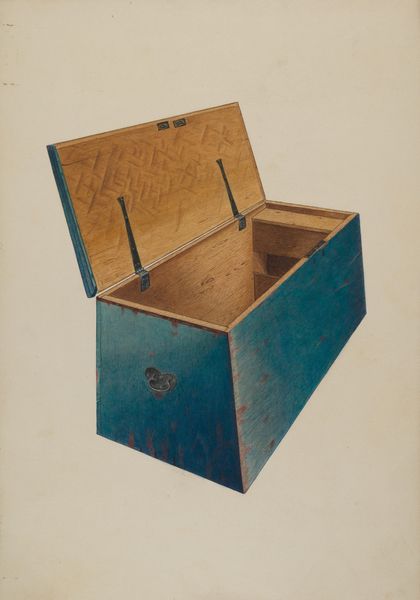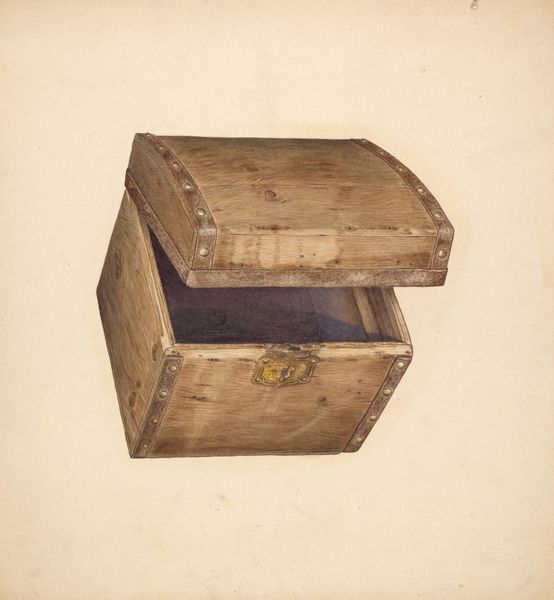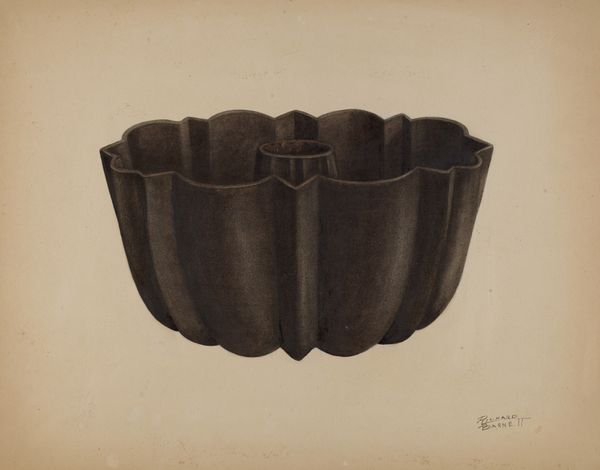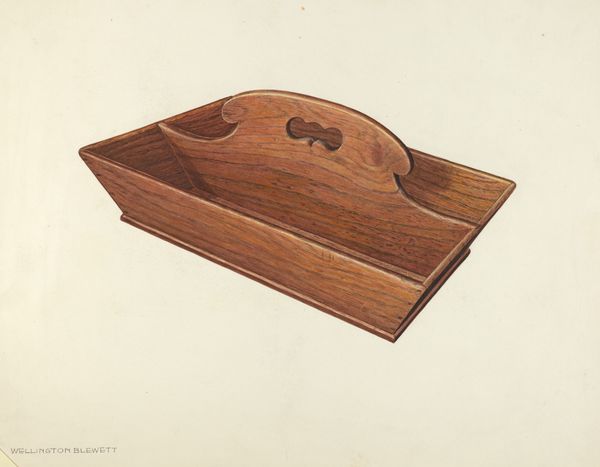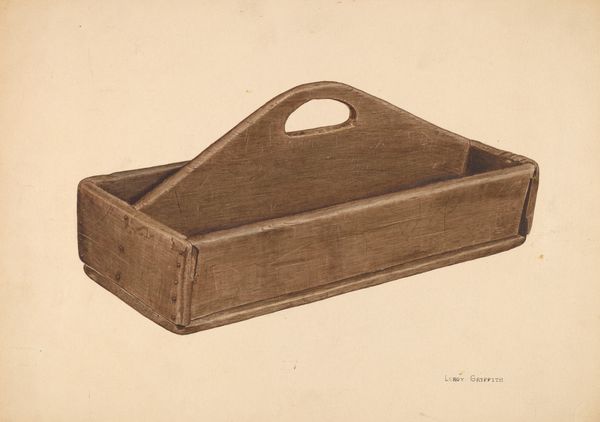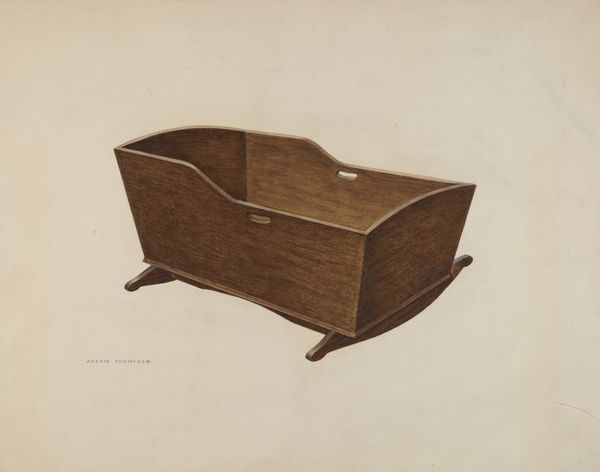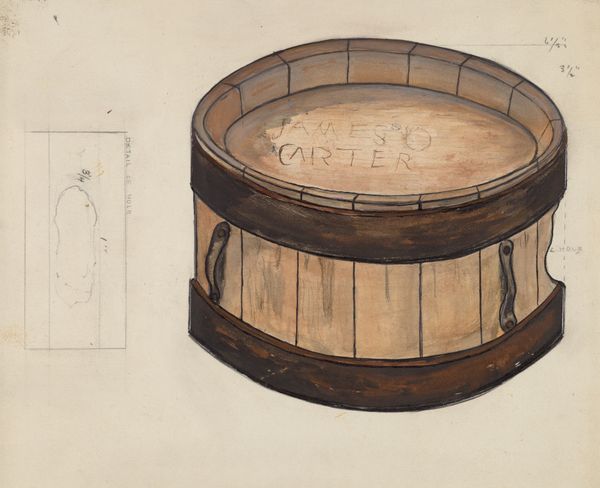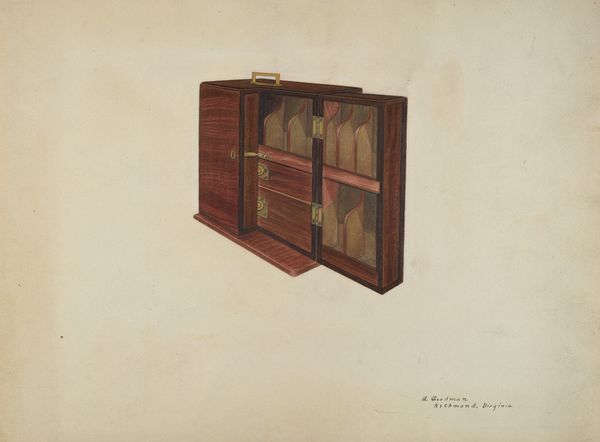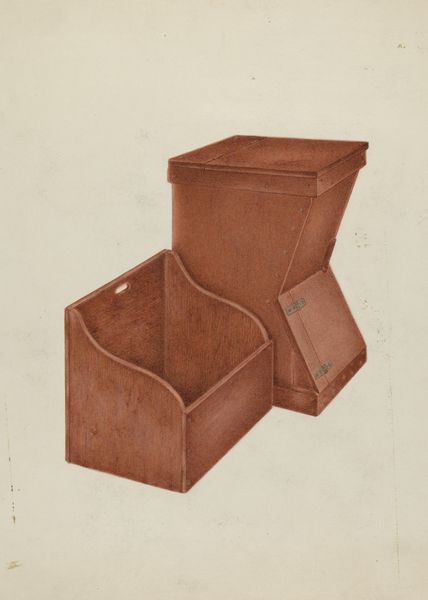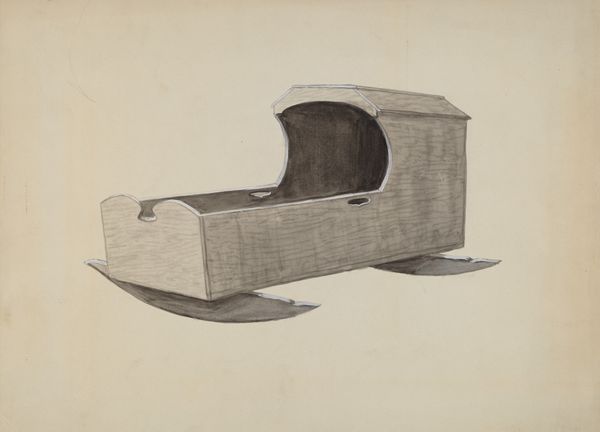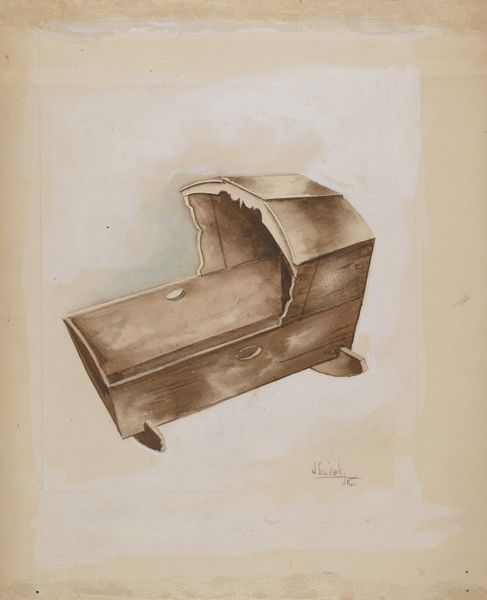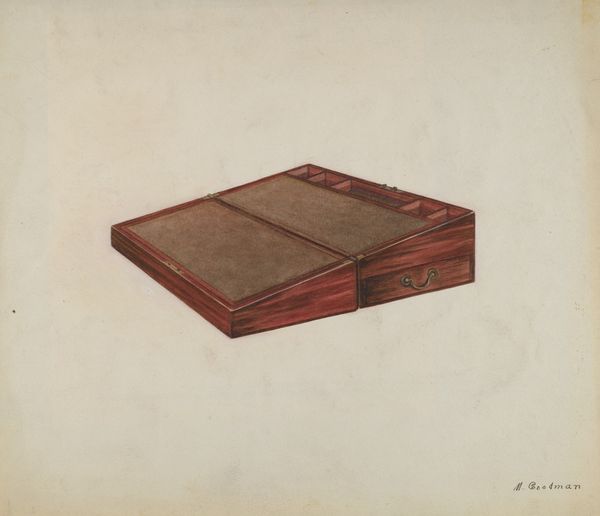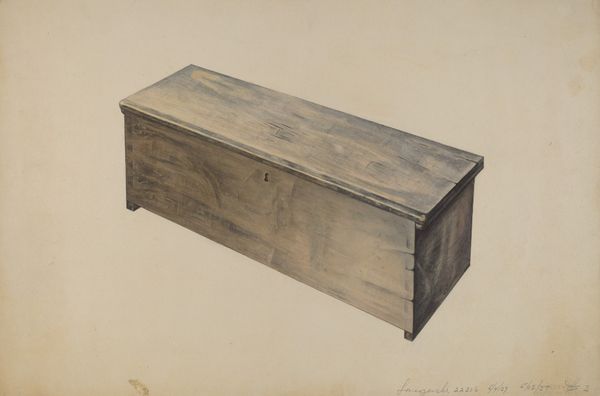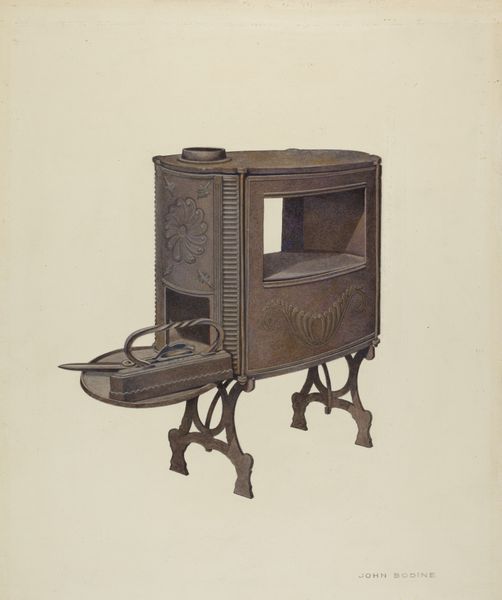
drawing, pencil, graphite
#
drawing
#
pencil drawing
#
pencil
#
graphite
#
graphite
Dimensions: overall: 27.8 x 18.5 cm (10 15/16 x 7 5/16 in.) Original IAD Object: bottom: 1 1/2" long; 1 1/4" wide; top: 1 3/4" long; 1 1/2" wide; 3/4" in diameter
Copyright: National Gallery of Art: CC0 1.0
Editor: This is George B. Meyer's "Patch Box," created around 1941. It's a pencil and graphite drawing, and something about the muted tones makes it seem almost ghostly, a design faded from memory. What do you make of it? Curator: Ghostly is an interesting way to put it. For me, it evokes a quiet kind of anticipation, like holding your breath before a secret is revealed. I find myself wondering what precious little things that box would have held! The patch box was a decorative box used for storing beauty patches to be applied on the face as embellishments. Does the object look practical to you? Editor: Not especially practical, no. It looks more like a monument. There's a strange grandeur to it, even though it’s just a sketch. I also get the sense that it could be something bigger. It's kind of abstract. Curator: I see what you mean, there's definitely something monumental and solid about its shape, despite being on paper. It could also speak to that period’s penchant for both practicality and elegance. The soft rendering does give it a mysterious edge; perhaps the design exists only in the realm of possibility, an idea more than a function. Look how much he included! He even featured a little ornamentation near the keyhole. Editor: The ornamentation gives it character. It really underscores that blend of functional and fancy that you were mentioning. I now have a stronger appreciation for these functional drawings that become works of art! Curator: Precisely! I think we both agree this work exists beautifully between worlds. And the details add so much insight!
Comments
No comments
Be the first to comment and join the conversation on the ultimate creative platform.
